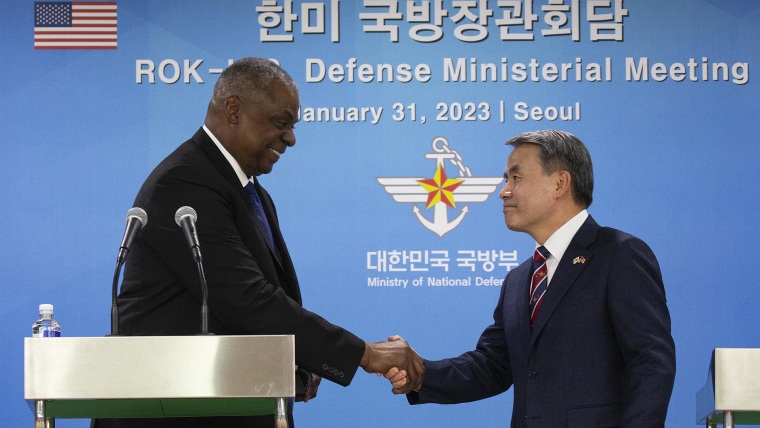[ad_1]
SEOUL, South Korea — The South Korean and U.S. militaries launched their biggest joint exercises in years Monday, as North Korea said it conducted submarine-launched cruise missile tests in apparent protest of the drills it views as an invasion rehearsal.
North Korea’s missile tests Sunday signal the country is likely to conduct provocative weapons testing activities during the U.S.-South Korean drills that are to run for 11 days. Last week, North Korean leader Kim Jong Un ordered his troops to be ready to repel its rivals’ “frantic war preparation moves.”
The South Korean-U.S. drills include a computer simulation called the Freedom Shield 23 and several combined field training exercises, collectively known as the Warrior Shield FTX.
South Korean and U.S. authorities did not immediately disclose details of Monday’s drills.
But they said earlier the computer simulation is designed to strengthen the allies’ defense and response capabilities amid North Korea’s increasing nuclear threats and other changing security environments. They said the field exercises would also return to the scale of their earlier largest field training called Foal Eagle that was last held in 2018.
A recent U.S. military statement said the field exercises are to further enhance the two militaries’ “cooperation through air, land, sea, space, cyber and special operations, and improve upon tactics, techniques and procedures.”
North Korea said in state media that its launches of two cruise missiles from a submarine off its east coast showed its resolve to respond with “overwhelming powerful” force to the intensifying military maneuvers by the “U.S. imperialists and the South Korean puppet forces.”
The North’s official Korean Central News Agency on Monday called the missiles “strategic” weapons and said their launches verified the operation posture of the country’s “nuclear war deterrence.” This implies that North Korea aims to arm the cruise missiles with nuclear warheads.
It said the missiles flew for more than two hours, drawing figure-eight-shaped patterns and hit targets 930 miles away. The missiles were fired from the 8.24 Yongung ship, KCNA said, referencing a submarine that North Korea used to conduct its first submarine-launched ballistic missile test in 2016.
The reported launch details show Japan, including U.S. military bases in Okinawa, is within striking distance of the cruise missiles, if they are fired from the North’s eastern waters, said Kim Dong-yub, a professor at the University of North Korean Studies in Seoul. He added the weapons could reach even the U.S. Pacific territory of Guam if the submarine could operate at a greater distance from North Korean waters.
Sunday’s actions were the North’s first underwater missile launches since it test-fired a weapon from a silo under an inland reservoir last October. Last May, the country test-launched a short-range ballistic missile from the same submarine.
North Korea’s command of submarine-launched missile systems would make it harder for adversaries to detect launches in advance and would provide the North with retaliatory attack capability. Experts say it would take years, extensive resources and major technological improvements for the heavily sanctioned nation to build a fleet of several submarines that could travel quietly in seas and reliably execute strikes.
Kim Dong-yub, the professor, said Sunday’s tests were the North’s first known launches of cruise missiles from a submarine as its previous underwater launches all involved ballistic missiles. He said that North Korea is pushing to obtain various types of missiles and launch platforms to enhance its ability to evade detection before launch or interception during flight.
South Korea’s military confirmed the latest North Korean missile launches, saying they were fired from a submarine in waters near the North’s eastern port city of Sinpo on Sunday. Sinpo has a major submarine-building shipyard.
South Korea’s Joint Chiefs of Staff said that it maintains a readiness in close coordination with the United States. It said the South Korean and U.S. intelligence authorities were analyzing details of Sunday’s launches.
[ad_2]
Source link

